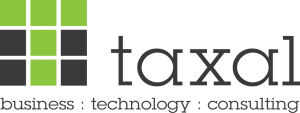Siemens PLM Software’s analyst event last month provided much food for thought. First off, Siemens showed a new dimension to their messaging. One that’s simpler and more focused on customer outcomes. Second, they provided a vision and many of the pieces that deliver ‘Industry 4.0’ as (to a large extent) a practical proposition.
For those that’re unaware of Industry 4.0, it’s a German Government sponsored initiative, supported by companies such as Siemens, Bosch and SAP. It focuses on a vision of industry focusing on the digitisation of design, factories and (customer and supplier) networks around Cyber-Physical Systems, the Internet of Things and the Internet of Services.
Chuck Grindstaff, Siemens PLM’s CEO and President rightly pointed out that today’s innovation ecosystem is relentless. Products are getting smarter and more complex; definitely true when considering the trend to more software (and electronics) driven product content. To this Siemens wants to be the be the company that helps customers deal with the contradictory drivers of product/ecosystem complexity and business velocity/agility. They aim to do this by providing a broad swathe of solutions that allow companies to design, make and support their products. A world where ‘digital twining’ (such as in areas of design and manufacturing) is as close to reality as possible so that Siemens’s digitally-led proposition to customers is both practical and (clearly) valuable.
Achieving the vision (of Industry 4.0) might be considered quite an objective from any one vendor, but in Siemens PLM’s case we have to remember that they’re supported by the technologies and know-how of the greater Siemens. Having said this, there some provisos; not least amongst these that the PLM division continues to show support for ‘open’ technologies and encourage and grow third party ecosystems.
Back to the conference. Much of the content was focused on providing press and analysts with updates on Siemens PLM’s ‘Smart Innovation Portfolio’, with some excellent customer presentations including one from Dell on their use of big data and analytics in the area of customer service.
Siemens PLM’s product messaging is one of a ‘Smart Innovation Portfolio’. This integrates ‘Engaged users’ (collaboration and intelligent app environments etc.), ‘Intelligent models’ (cyber-physical systems/digital twins etc.), ‘Realized Products’ (automation/manufacturing/planning etc.) and ‘Adaptive systems’ (data driven decision making etc.). While there’s much to comment on I was intrigued by new offerings made possible by their acquisition of Camstar, and so too their new mobile app Catchbook.
Camstar’s suite of tools allow Siemens to expand their available markets beyond traditional domains (well beyond that of MES) to areas of customer service (and by extension IoT), big data and analytics. Their first consumer-friendly (sketching) mobile app Catchbook allows Siemens to expand their reach not only to new customers but also to consumers, mindful of the (sketching) needs of new/next generation users.
Siemens have already made public their interest in transitioning their large platforms (Teamcenter for example) to more ‘app-like’ forms, and to date they’ve done a good job so far in simplifying (and beautifying) their offerings. But the next generation (Y) is (rightly in my eyes) critical on the complexity of monolithic software products and Catchbook is an interesting take on Siemens’ capacity to react to these objections. Transforming to ‘apps’ (and born-on-the-Cloud/subscription based) might be considered by many as primarily a technological exercise; but I’d suggest that it’s as much, if not more so a challenge to (Siemens’) existing pricing, business and sales models.
